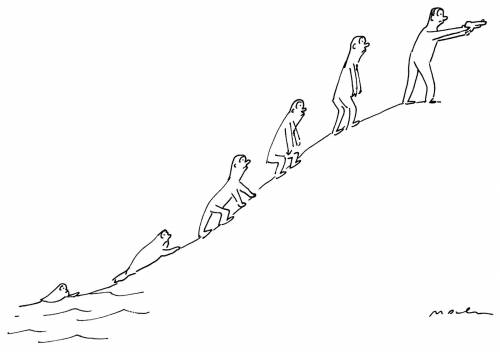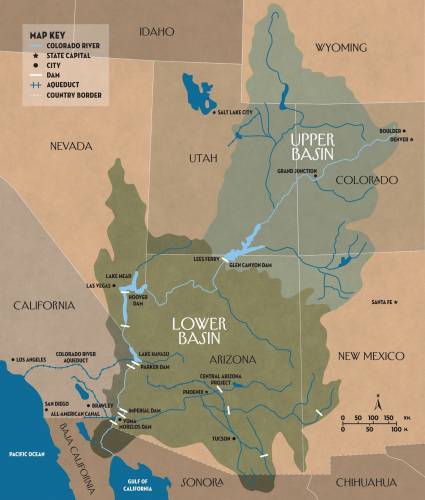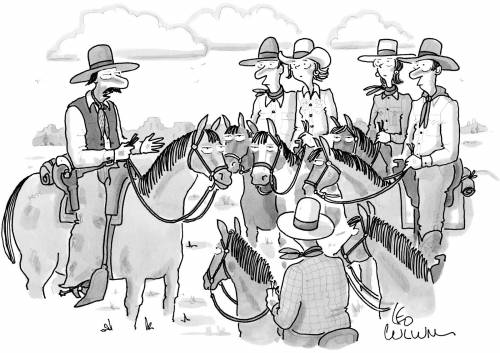Our pilot, David Kunkel, asked me to retrieve his oxygen bottle from under my seat, and when I handed it to him he gripped the plastic breathing tube with his teeth and opened the valve. We had taken off from Boulder that morning, and were flying over Rocky Mountain National Park, about thirty miles to the northwest. We were in a Maule M-7, a single-engine “backcountry” plane, and Kunkel was navigating with the help of an iPad Mini, which was resting on his legs. “People don’t usually think altitude is affecting them,” he said. “But if you ask them to count backward from a hundred by sevens they have trouble.” What struck me at that moment was not how high we were but how low: a little earlier, we had flown within what seemed like hailing distance of the sheer east face of Longs Peak, and now, as Kunkel banked steeply to the right to give a better view of a stream at the bottom of a narrow valley, his wingtip appeared to pass just feet from the jagged declivity beneath. Snow had fallen in the mountains during the night, and I half expected it to swirl up in the plane’s wake.
The other passenger, sitting in the co-pilot’s seat and leaning out the window with a camera, was Jennifer Pitt, a senior researcher for the Environmental Defense Fund. Pitt, who is in her forties, is the director of the E.D.F.’s Colorado River Program. She has long brown hair, which she had pulled back into a ponytail, and she was wearing a purple fleece. Most of her work in recent years has involved the river’s other end, in Mexico, but she had agreed to show me its source. We were bound for the Colorado’s headwaters, just over the Continental Divide, roughly fifty miles south of the Wyoming state line. “The best way to see a river system is from the air,” she had told me.
She pointed toward the Never Summer Mountains, on our right, and said, “There’s the Grand Ditch.” I saw what looked like a road or a hiking trail cut across the face of a steeply sloping forest of snow-dusted conifers; she explained that it was an aqueduct, dating to 1890. Until 1921, the section of the Colorado that’s upstream from its confluence with the Green, in eastern Utah, was called the Grand. Hence: Grand Lake, Grand Valley, Grand Junction (but not Grand Canyon, which was named for its grandness). The Grand Ditch carries water toward the state’s eastern plains. It doesn’t take water directly from the river but captures as much as forty per cent of the flow from slopes that would otherwise feed it, like a sap-gathering gash in the trunk of a rubber tree. We had already flown over later additions to the same network, including Long Draw Reservoir, completed in 1930, and five connected lakes that lie on the western side of the divide. The northernmost of those lakes spills as much as a third of a billion gallons a day into a tunnel, which carries the water under the park, through five hydroelectric generating plants, and into a distribution system that serves a large area east of the mountains, including the city of Boulder.
Kunkel dipped a wing. “We just flew over the headwaters,” he said. Our position was easier to see on his iPad than on the ground, because since we’d entered the mountains he’d had to pick his way under and around what sometimes looked like an upside-down ocean of clouds. The ceiling made flying difficult but helped to explain the existence of the water-storing-and-shifting network we’d been looking at. As moisture-laden weather systems move eastward across the western United States, they pile up over the Rockies, dumping snow and rain. Eighty per cent of Colorado’s precipitation falls on the western half of the state, yet eighty-five per cent of the population lives to the east, in what’s known as the mountains’ rain shadow. If transporting water from one side to the other were impossible, most of the people who live in Denver and other Eastern Slope cities would have to move.

“Seriously, fellas, I can’t get up.”
When the first Europeans to see the Grand Canyon looked down from its southern rim, in 1540, they guessed that the stream they could see at the bottom must be about eight feet wide. They’d been fooled by the scale of the canyon, but, even so, the Colorado River isn’t huge. It’s nearly a thousand miles shorter than the Mississippi and only a fraction as wide, but it’s a crucial resource for a surprisingly large part of the United States. A congressman in 1928 called it “intrinsically the most valuable stream in the world.” It and its tributaries flow through or alongside seven Western states—Colorado, Wyoming, Utah, New Mexico, Nevada, Arizona, and California—before crossing into Mexico near Yuma, Arizona. It supplies water to approximately thirty-six million people, including residents not just of Boulder and Denver but also of Salt Lake City, Las Vegas, Phoenix, Tucson, San Diego, and Los Angeles, several of which are hundreds of miles from its banks. It irrigates close to six million acres of farmland, much of which it also created, through eons of silt deposition. It powers the hydroelectric plants at the Hoover and Glen Canyon dams, is the principal source for the country’s two biggest man-made reservoirs, and supports recreational activities that are said to be worth twenty-six billion dollars a year. Some of its southern sections attract so many transient residents during the winter that you could almost believe it had overflowed its banks and left dense alluvial deposits of motorboats, Jet Skis, dirt bikes, all-terrain vehicles, trailers, mobile homes, fifth wheels, and R.V.s.
All that human utility has costs; the river suffers, in varying degrees, from many of the same kinds of overuse and environmental degradation that threaten freshwater sources around the world. The Colorado’s flow is so altered and controlled that in some ways the river functions more like a fourteen-hundred-mile-long canal. The legal right to use every gallon is owned or claimed by someone—in fact, more than every gallon, since theoretical rights to the Colorado’s flow (known as “paper water”) vastly exceed its actual flow (known as “wet water”). That imbalance has been exacerbated by the drought in the Western United States, now in its sixteenth year, but even if the drought ended tomorrow problems would remain. The river has been “over-allocated” since the states in its drainage basin first began to divide the water among themselves, nearly a century ago, and scientists expect climate change to strain it further, in part by reducing precipitation in the mountains that feed it.
Not long ago, I travelled as much of the Colorado’s length as can be followed in a car. I began near the headwaters, put three thousand miles on three rental cars, and ended, eventually, in northern Mexico, where the Colorado simply runs out. So much water is diverted from the river as it winds through the Southwest that, since the early nineteen-sixties, it has seldom flowed all the way to its natural outlet, at the upper end of the Gulf of California, and since the late nineteen-nineties it has made it there only once. People who drive into or out of the town of San Luis Río Colorado, in the Mexican state of Sonora, sometimes complain about having to pay a six-peso toll to cross a bridge that spans only sand.
Kent Holsinger is a Denver lawyer whose specialties include water law. He grew up on a cattle ranch near Walden, Colorado, a town that, on a clearer day, Kunkel, Pitt, and I could have spotted from the air. His parents still live there. “It’s a small cattle ranch, about eight hundred acres,” he told me. “My parents have kind of slowed down, so we don’t run our own cattle anymore, but we lease out the pasture in the summer, and we put up irrigated native-grass hay, which we sell primarily to horse people.” A stream crosses the ranch, and the Holsingers draw water from it, but their right to do so isn’t based on the fact that their property is adjacent to the stream, as it would be in the East. “Water law in Colorado and most states in the West is based on what’s called the doctrine of prior appropriation,” he said. That doctrine holds that the first person to make “beneficial use” of water gains the right to use that quantity for that purpose forever, and that the claim takes precedence over every claim made later.
The prior-appropriation doctrine originated during the California gold rush, which began in 1849, and during a similar gold rush in Colorado a decade later. The most common mining technique in that era involved shovelling earth into a wooden trough, called a sluice box, then directing a swiftly moving stream of water over it, in the hope of washing away everything but gold. Disputes arose when newcomers made diversions upstream from existing operations, because water was so scarce that dividing the flow among multiple miners could make it useless to all. Early farmers faced identical conflicts. The solution, through much of the West, was a new conception of water rights whose central tenet was “first in time, first in right.” Proximity to the source counted for nothing, because miners and farmers sometimes had to move water long distances. The critical factor was the date of first use.
Holsinger told me that his family’s water right is more than a century old, but that a downstream neighbor’s is older: “If the senior wasn’t getting all his water, he would call the water-rights commissioner, who would call us and say we had to turn off our head gate”—a valve that diverts water from a stream, in their case for irrigation. “We’ve got a mile of river on the property, but that didn’t make any difference. We had to shut down, and that meant turning off our income. That’s why senior water rights are extraordinarily valuable.”

“Don’t let the infinity throw you.”
Most of the water in the Colorado River originates in snowpack in mountains in the northern part of its watershed, but the biggest consumers of that water are at the river’s other end—in Southern California especially. In the early nineteen-hundreds, people in other river states, where settlement was still thin, worried that California was growing so quickly that its farmers and municipal water systems would establish priority claims to virtually all the water in the river—even though the Colorado doesn’t actually flow through California but forms its border with Arizona. In 1922, representatives from Wyoming, Colorado, Utah, New Mexico, Arizona, Nevada, and California reached an apportioning agreement, called the Colorado River Compact, which divided the river’s watershed into two basins, upper and lower, and allocated the flow equally between them. Working out the details took several more decades and required the involvement of Congress, the Supreme Court, and Henry Kissinger, but the basic agreement is still in force. It’s the central element of what’s known as the Law of the River, a loosely defined and circumscribed body of rules, precedents, habits, treaties, customs, and compacts which isn’t written down all in one place but is invoked almost any time two water users disagree about who’s entitled to what.
The compact granted 7.5 million acre-feet per year to each basin. (An acre-foot is the amount of water that would cover an acre to a depth of a foot—roughly three hundred and twenty-five thousand gallons.) The total was based on estimates by hydrologists that the average annual flow of the Colorado was at least seventeen million acre-feet a year. Subsequent studies, including tree-ring analyses, have proved that the hydrologists were wrong. It’s now known that the years on which the original estimates were based, in the early twentieth century, had been the wettest since the sixteen-hundreds, and that 1922, the year of the agreement, was one of the very wettest. Since then, there have been years when the total flow was less than a third of what the negotiators assumed, and scientists have identified ancient dry periods that lasted for many decades. Jennifer Pitt told me, “Even before people were considering climate change and water management, they had begun to realize that there was much less water.” But the allocations have not been reduced. At the annual meeting of the Colorado River Water Users Association, in December, two representatives of the U.S. Bureau of Reclamation estimated that the system now has an average “structural deficit” of 1.2 million acre-feet a year.
For most of the twentieth century, the discrepancy was inconsequential, because people hadn’t yet found ways to use up more than all the water in the river. (The upper-basin states—Wyoming, Colorado, New Mexico, Utah, and a tiny corner of northern Arizona—still take less than their theoretical entitlement.) The impact on human activity has been less obvious than it might have been, because the river’s two huge reservoirs, Lake Mead and Lake Powell, have acted like lower-basin credit cards. In 1998, both lakes were essentially full and, between them, stored more than fifty million acre-feet of water—roughly two and a half years’ worth of the river’s average total flow. Today, they contain less than half that much. In a paper published in 2008, two scientists at the Scripps Institution of Oceanography wrote that “currently scheduled depletions are simply not sustainable.”
If you drive west on Interstate 70 from Denver, you pick up the Colorado at Dotsero, about a hundred miles east of the Utah border, and follow it west through canyons so deep and narrow that some stretches are engineered like double-decker bridges: one lane on top of the other. The railroad goes that way, too, on the opposite bank. Tunnels punch through buttresses of rock that the road builders couldn’t go around, and there are sections where the view above is so transfixing that you have to remind yourself to look back at the road. Half an hour west of Dotsero, you pass the Shoshone Hydroelectric Plant. The plant’s output is small, but it controls one of the state’s oldest large rights to water from the river, with a priority date of 1902. Theoretically, in a shortage the plant would be entitled to claim its entire allotment, twelve hundred and fifty cubic feet per second, before the city of Denver got any.
Farther along, past the towns of Silt, Rifle, and Parachute, the canyon opens into a broad basin called the Grand Valley. From the air, the closely spaced irrigated fields that cover it make it look like an enormous green patchwork sock. Farming began there in the late eighteen-hundreds, and was made possible by irrigation. The water is diverted from the river near the eastern end of the valley, then channelled through a complex network of ditches, reservoirs, and conduits, past the headgates of small and large farms. I stopped to look at an irrigated alfalfa field near the intersection of 10 1/2 Road and Q 3/4 Road, not far from the corner of 11 8/10 and P. (Grand Junction’s first north-south roads were named for their distance in miles from the Utah border, the east-west roads were named with letters of the alphabet, and the gaps have been filled in with fractions and decimals.)

People who live on farms and in small towns in western Colorado often accuse people who live in cities in eastern Colorado of taking water that doesn’t belong to them, but throughout the West the main water consumers are farms. Jim Lochhead, who is the chief executive officer of Denver Water, the biggest water utility in Colorado, told me, “We serve a quarter of the state’s population and well over a quarter of the state’s economic activity, yet we use less than two per cent of the state’s water.” Agriculture accounts for roughly eighty per cent of all Colorado River water consumption. That means that cities could cut back by double-digit percentages without having much impact on overuse, and that most serious conservation efforts necessarily focus on agriculture.
In the Grand Valley, the principal crops include peaches, alfalfa, and grapes. I visited Brooke and Brad Webb, who worked in finance in Denver until 2009, when they bought Mesa Park Vineyards, in Palisade. Brooke showed me their headgate and the communal irrigation canal that feeds it. “When we moved in, the water wasn’t being managed well,” she said. “So we started cutting new furrows every year, and we’ve cleaned out our ditches and lined them with plastic, to keep them from leaking, and now we actually manage the wastewater for about five different properties.” The Webbs draw much less water than their right entitles them to, and they have eliminated a wet area at the bottom of their property, where excess irrigation water used to pool.
Reducing waste seems like an obvious solution to overuse, but it can actually make the problem worse. Bradley Udall, a scientist at Colorado State University’s Colorado Water Institute—his family has been prominent in conservation and in regional and national politics for decades—told me that water use can be divided broadly into two categories: consumptive and non-consumptive. When a farmer irrigates a field with river water, he said, some of the water is consumed by whatever the farmer is growing and by evaporation, but some is returned to the stream. The ditch system in the Grand Valley carries runoff and surplus irrigation water back to the river, and that water is used again, mainly by other farmers. (Kent Holsinger told me that, on average, river water is used more than half a dozen times before it leaves the state.) Excess irrigation water also soaks into the earth, replenishing groundwater and, eventually, feeding surface streams.
Udall said, “Efforts to improve water efficiency in agriculture almost always lead to increases in the consumed fraction. On an individual field, they make it look like we are using water better, but they actually move us in exactly the wrong direction.” Modern, efficient irrigation techniques can cause crop yields per acre-foot to rise, but also increase water consumption, so downstream users who relied on excess from upstream—the non-consumed fraction—now have to find water somewhere else. Increasing efficiency also does nothing to address over-allocation. Indeed, it can make over-allocation more dire, by allowing uses, and even the total number of users, to grow. Waste, paradoxically, is a kind of reservoir. If the residents of a suburb routinely water their lawns, they can stop during a drought. But once they’ve replaced their Bermuda grass with cacti and gravel, and once the water that formerly ran through their sprinklers has been redirected to bathrooms and kitchens in brand-new subdivisions, the enlarged system is more vulnerable in dry periods, because it contains less slack.
Near the western end of the irrigated portion of the Grand Valley, I-70 diverges from the river, but I picked up the Colorado again, a few miles over the Utah line, by taking the exit for Route 128. Parts of the road run along an old pack trail. It follows the river past squat mesas and a weathered wall of spindly red pinnacles called the Fisher Towers, then descends into a sandstone gorge that resembles a preliminary, reduced-scale draft of the Grand Canyon.
If you’re in a car, your last chance to cross the Colorado before you reach Hoover Dam is on the Navajo Bridge, which carries Route 89A over Marble Canyon, in north-central Arizona. Just over the bridge on the western side is a turnoff for a dirt road. It follows the river a few miles upstream to a remote outpost called Lees Ferry, which played a role in Western history: before the bridge was built, it was the only place for hundreds of miles where crossing the river on a horse or in a wagon was remotely feasible. It was named for John Doyle Lee, a prominent Mormon settler. In 1857, Lee was a leading participant in the Mountain Meadows Massacre, in which Mormon vigilantes, aided by Paiute Indians, slaughtered a hundred and twenty non-Mormons in a wagon train bound for California. Brigham Young sent Lee to operate a ferry at the river crossing. He was arrested four years later, and was executed by firing squad in 1877, after posing for a photograph while sitting on his coffin.

Map by Mousecake; Reference: Pacific Institute, Oakland, California
Today, Lees Ferry is where most Grand Canyon raft trips begin. (The next spot downstream where the river is accessible to a motor vehicle is more than two hundred and sixty miles away.) Lees Ferry also marks the boundary between the river’s upper and lower basins, as established by the 1922 compact. Not far from the original crossing is a boxy pillar containing the gauge that the U.S. Geological Survey uses to monitor the volume of water passing from the upper basin to the lower. Above Lees Ferry, water mainly flows into the river; below, it mainly flows out.
Las Vegas means “the meadows.” It was named for an oasis a few miles north of what’s now the Strip, where groundwater under the desert was so abundant that it pushed to the surface, forming earthen domes called “spring mounds.” There’s a museum and a large botanical garden on the site, but the springs stopped flowing in 1962. The metropolitan area today has a population of close to two million, and ninety per cent of the water it uses comes from the Colorado River. That water is pumped to the city from Lake Mead, thirty miles to the east.
I drove to Hemenway Harbor, near the lake’s southwestern corner, and parked in a sloping lot that not many years ago would have been underwater: Mead’s volume has fallen by roughly sixty per cent since 1998, the last time it was full. (Lake Powell, which is upstream from Mead, has nearly the same maximum capacity and has shrunk by almost as much.) From the parking lot, I could see Pyramid Island, a couple of miles to the north, and Saddle Island, just beyond it; neither is still an island.
On the dock of the Lake Mead Marina, I met Bob Gripentog, whose family has owned it since 1957, when he was six, and Rod Taylor, who works for a company that operates a marina on a different part of the lake. We got into one of Gripentog’s boats, and went out to look around. The surrounding terrain looked like rumpled mountains of exotic spices: all ochres and umbers and oranges and smoky taupes and rusty browns. Both men were concerned about what Taylor called “apocalyptic reporting,” and they wanted to be sure I understood that the lake is still gigantic. That’s certainly true, but if you know Lake Mead you can’t help noticing that most of it is missing: the surface of the lake is about a hundred and thirty feet lower than it was in 1998. The loss is easy to visualize, because as the lake recedes it exposes a white “bathtub ring” of mineral deposits on the surrounding bluffs. Gripentog turned his boat around, and we headed north, along the eastern shore, then looped to the left, back toward the marina. We passed Saddle Island. Near its southern end was a steel tower a little taller than the bathtub ring, and standing on top of the tower was a structure that, from a distance, looked like a house with a gable roof. “That was the original intake that sent water to Las Vegas,” Gripentog said.
And there, in the minds of many people, is the problem. The decline of the lake and the growth of the city have been concurrent, so there’s a widespread assumption that the latter is the cause of the former. The association is strengthened by the fact that, of all the cities that draw water from the Colorado, Las Vegas is the closest to its banks. But Las Vegas barely existed when the Colorado River Compact was negotiated, and it was still small when the division of water among the three lower-basin states was settled, in 1963. Nevada’s share is just two per cent of the compact total, and Las Vegas, in order to grow, has adopted some of the most stringent water-conservation regulations in the country. That growth has had environmental consequences unrelated to water, but, as far as Lake Mead and the Colorado River are concerned, the city’s impact has been minor.
Today, ninety-three per cent of the water that’s used indoors in the metropolitan area is treated in a plant to the east of the city and is then either used again locally, for irrigation, or returned to the lake, earning a “return-flow credit.” The regional water authority has a long-running Xeriscaping program, which pays people to remove turf and has been copied in other Western cities, and one result is that Las Vegas today uses less water than it did fifteen years ago. A spokesman for the authority told me that, if Nevada were to withdraw a full year’s worth of its net Colorado River water use in a single gulp, the lake would fall by thirty inches. “For context,” he continued, “California uses about forty-four feet of water a year. Arizona uses twenty-eight feet. Mexico uses fifteen feet. To put it in even more context, the evaporation off Lake Mead alone is four times our annual usage as a community.”

“Oh, good. You remembered my flag.”
If you drive south from Lake Mead on the Arizona side of the river, in about two hours you come to London Bridge. It stood on the River Thames from 1831 until 1968, when London, which was planning to replace it, sold it to Robert McCulloch, an American entrepreneur and chainsaw manufacturer, for two and a half million dollars. McCulloch hired a crew to take it apart and number the stones, and then he shipped it to Arizona by way of the Panama Canal and Long Beach, California. He reassembled it at Lake Havasu, a Colorado River reservoir on the border of Arizona and California, as the anchor attraction of a development he was creating, called Lake Havasu City. The bridge has five graceful granite arches, and it spans a two-hundred-yard-wide channel that separates the eastern shore of the lake from what used to be a peninsula.
Thirty miles south of London Bridge on Route 95 South is Parker Dam, which created Lake Havasu and was completed in 1938. The dam marks the beginning of the final and most complex stage of the transformation of the Colorado River from a natural stream into a dispersed and brachiating resource-distribution system. Some of the water is diverted west, to Los Angeles, and some is diverted east, to central Arizona, and some continues downstream, to diversions farther south. The water bound for Los Angeles flows through the Colorado River Aqueduct, which begins at a pumping station on the lake’s western shore. I drove across the dam and up a winding dirt road, and at a locked gate I met Don Nash, who manages the desert portion of the aqueduct. He lives in a compound a couple of hundred yards from the plant.
The dam, the aqueduct, and the pumping plant were all built in the nineteen-thirties by the Metropolitan Water District of Southern California. Nash gave me a tour of the pumping station. We were joined by his daughter, Baily, a high-school junior. Running the dam and the other facilities used to require more people than it does today, and when Baily was younger there were so many children in residence that they filled the local elementary school. The community was isolated, she said, but she loved growing up there. When I arrived, her father guessed correctly that she would be inside, drawn by the smell of oil in the pump room.
The plant’s main building has a terrazzo floor and Art Deco light fixtures, and it contains nine nine-thousand-horsepower pumps, with robin’s-egg-blue housings. “Each one could fill an Olympic-size swimming pool in twenty seconds,” Nash said, as we walked down the line. The pumps run so smoothly that when you place a nickel on any of them—as visitors are sometimes encouraged to do—there isn’t enough vibration to make it slide off. They push lake water up a steep slope directly behind the plant, and through a mile-long tunnel to a reservoir in the Whipple Mountains. A second pumping station then pushes the water higher still, to a bigger reservoir. Nash said, “Then it goes by gravity down to Iron Mountain and Iron lifts it a hundred and forty-four feet; then to Eagle, and Eagle lifts it four hundred and thirty-eight; then to Hinds, and Hinds lifts it four hundred and forty-one.” Altogether, there are five pumping stations, ninety-two miles of tunnels, and a hundred and forty-seven miles of open aqueducts, buried conduits, and siphons. Water takes approximately five days to travel from Havasu to Lake Mathews, forty-five miles southeast of downtown Los Angeles. There it enters a distribution system that covers much of the metropolitan area. Recently, because of the drought, some of the water has been pushed even farther, to suburbs well beyond downtown L.A. “I actually went over and watched them start that pump,” Nash said. “It was kind of exciting to see my water going all the way to Ventura.”
On the southeastern shore of the lake, on the other side of the dam, is the beginning of Arizona’s equivalent to the Colorado River Aqueduct—the Central Arizona Project (CAP), a three-hundred-and-thirty-six-mile-long system of canals, tunnels, and pumping plants which extends all the way to Tucson. It wasn’t completed until 1993, and the main reason is that it took Arizona a long time to work out water-related disagreements with California. “Arizona from the very beginning has had a chip on its shoulder about this river,” Grady Gammage, Jr., a former president of the Central Arizona Project’s board of directors, told me when we met in his office, in downtown Phoenix. “We felt that, because the Colorado River flows through Arizona for three hundred-plus miles before it ever forms a border with California, and because there are tributaries of the river that flow out of Arizona into the Colorado, we should get at least as much water as California gets.”
In 1934, shortly after work on the Parker Dam began, Arizona’s governor, Benjamin B. Moeur, dispatched National Guard troops to the site and won an injunction halting construction. Moeur and many others in Arizona were worried that California, which was growing much faster than the rest of the lower basin, was going to end up with more of the river than it deserved, and that by the time Arizona was in a position to claim its share too little would be left. The main dispute wasn’t settled until 1963, when the Supreme Court affirmed the lower-basin division at 4.4 million acre-feet for California, 2.8 million for Arizona, and three hundred thousand for Nevada.

“They grow up so fast!”
The Central Arizona Project is the largest and most expensive aqueduct system in the country. The cost, about four billion dollars, was financed by the federal government, although Arizona is required to pay back most of the money eventually. Initially, it planned to do that, in part, by selling CAP water to farmers, who had previously irrigated mostly with groundwater. But the project’s huge cost made CAP water so expensive that farmers couldn’t afford it. To prevent California from taking the water instead—by the terms of the compact, California is entitled to use any water that other states don’t—Phoenix, Tucson, and other Arizona municipalities agreed to take CAP water they didn’t need and sell it to farmers at a deep discount. The cities were willing to do that, Gammage told me, because “keeping water away from California is one of our fundamental principles.”
For similar reasons, and also to protect itself against future shortages, Arizona employs several water-banking strategies. One involves storing surplus river water in the ground, by flooding it onto “spreading basins” in the desert and allowing it to soak in. (Water stored underground, unlike water stored in reservoirs, doesn’t evaporate.) Arizona also classifies groundwater that farmers don’t use as though it were CAP water that had been banked—an essentially metaphorical form of storage, known as “indirect recharge.” For political reasons, states are reluctant to sell water to each other, but in recent years some of them have devised workarounds. In the late nineteen-eighties, the water authority in southern Nevada began storing unused portions of the state’s Colorado River allotment in aquifers throughout the Las Vegas Valley. But in recent years, as Lake Mead has shrunk to perilous levels, Nevada has left some of its water in the lake and arranged for California to keep the same amount in its reservoir system, in effect with Nevada’s name on it. (When Nevada wants that water back, it will draw it from Lake Mead, and California will forgo part of its own allotment.) Nevada pays Arizona to do something similar.
When the Western states were sorting out their ideas about water rights, in the late eighteen-hundreds and early nineteen-hundreds, groundwater was not well understood. Lawmakers and even scientists often thought of it as a distinct resource, despite the fact that there’s almost always a hydrological connection between water above the surface and water below it. Some of that early ignorance persists in state statutes. California’s approach to groundwater is still primitive; it was getting most of its water from wells even before the drought and has only recently begun to talk seriously about regulating withdrawals. There are places in California’s San Joaquin Valley where the land has subsided by dozens of feet, because groundwater there has been pumped so much faster than nature can replenish it.
Groundwater depletion is hard to quantify, but recently scientists have been able to estimate it by using data from a NASA mission called the Gravity Recovery and Climate Experiment. GRACE employs two satellites, which follow each other in orbit around the Earth. Jay Famiglietti, a scientist who works on the project, told me, “The satellites are separated by two hundred kilometres, and the primary thing they measure, using infrared lasers and G.P.S., is tiny changes in that distance, plus ups and downs.” The fluctuations are caused by variations in the Earth’s gravitational pull, which are caused by variations in the mass of whatever the satellites are passing over. The original focus of the mission was on such obviously climate-related phenomena as melting glaciers and rising sea levels, but the scientists eventually realized that they could also detect changes on land caused by fluctuations in groundwater volumes. Famiglietti told me that, on color-coded maps generated from GRACE data, the Western United States looks disturbingly like “a big hot spot.” He said, “One thing you see from the figures is that, between the end of 2004 and the end of 2013, the Colorado River basin lost fifty cubic kilometres of groundwater. That’s almost two Lake Meads. Everyone is very focussed on the bathtub ring and the dropping of the lake, but the rate of disappearance of groundwater is six or seven times greater.”
It had rained a little the morning I visited Lawrence Cox, on his farm, near Brawley, in California’s Imperial Valley. I suggested that maybe I deserved credit for bringing it—my contribution to ending the drought. “We don’t plan for rain here,” he said. “Our average rainfall is something like 2.85 inches a year, and everything is irrigated. So if we do get rain it disrupts our normal activities.” We got into his truck and went out to see some of his fields. Cox is fifty-six. He had a scruffy grayish beard that didn’t necessarily look permanent, and he was wearing sunglasses, a khaki work shirt, and a camouflage baseball-type cap. His father started farming in the valley in the nineteen-fifties. Now Cox and his siblings own about thirty-six hundred acres, and he leases several hundred acres more.

“Today we can help herd cattle, go on a nature hike, get a sauna and massage, or go into town and rob the bank.”
The Imperial Valley is the largest single consumer of Colorado River water. The ground there is flat and the soil is deep—it consists partly of what’s missing from the Grand Canyon—but until farmers began settling there, in the late eighteen-hundreds, it looked like what it was: an especially dry portion of the Sonoran Desert. Now it’s one of the most productive agricultural areas in the country, and the reason is irrigation. The first farmers to settle in the valley used groundwater, but there wasn’t enough. Eventually, they built diversions from the Colorado, thirty miles to the east.
Cox parked next to a concrete-lined irrigation ditch, reached into the back seat, and grabbed a handful of papers from a pile the size of a dictionary. “Here’s part of our lettuce schedule,” he said, running a finger down a tightly spaced spreadsheet. “We started planting September 21st, and that block will harvest December 7th. And we go all the way down here, all the different varieties of romaine, green, red, butter, hearts.” There were thirty-four blocks listed on the page, most of them ten or fifteen acres. The planting dates stretched almost to Christmas, and the last harvest date was March 22nd. He pulled out another sheet with labelled rectangles drawn in pencil. “This is a market-onion map,” he said. “We’ve got Mata Hari, Amadori, Gabriella.”
Growing food in a desert may seem nutty, but there are advantages. Frost, hail, and damaging rainstorms are far less common than they are in other parts of the country, and the growing season is year-round, as are the jobs. Last year, Brawley received a little over half its average annual rainfall on a single stormy day, August 21st, and other than that got just the odd sprinkle. Total reliance on irrigation is a drawback in one way, because the water has to come from somewhere, but the absence of rain is what makes precise planning possible: farmers in the Midwest don’t know to the day when they will harvest the corn they hope to plant next month (weather permitting).
As the Western drought has worsened, and as the consequences of over-allocation have increased, though, Cox and many other lower-basin farmers have had to cut back. In 2003, state and municipal water authorities, together with the United States Department of the Interior, negotiated a pact called the Quantification Settlement Agreement for the Colorado River, which is being phased in and will take full effect in 2021. Its purpose is to reduce California’s reliance on the Colorado River to its allotment, 4.4 million acre-feet. Among other things, it requires the Imperial Irrigation District to “transfer” part of its current water consumption to San Diego, Los Angeles, and other users in the state, mainly by letting some farmland lie fallow and by modernizing irrigation techniques.
Cox drove me past a field in which one of his employees was planting lettuce, and parked by another ditch. “This is some of our citrus, here,” he said. “It’s grapefruit. It’s been flood-irrigated in the past, but we’re switching it all to micro-sprinkler.” Doing that will reduce Cox’s water need, but it will also have the perverse efficiency effect that Bradley Udall described, by turning a non-consumptive use (irrigation runoff) into a consumptive one (more grapefruit). That’s an especially complicated issue in the Imperial Valley, because runoff from farms like Cox’s is the only source of water, other than modest amounts of rainfall and mountain runoff, for the Salton Sea, an immense but shrinking and increasingly threatened lake at the northern end of the valley.
Conservation has had other negative effects in the region. Water from the Colorado is transported to the valley by the All-American Canal, which was completed in 1942. It used to leak tens of thousands of acre-feet a year into the desert along its route. In 2010, as part of the Quantification Settlement Agreement, a concrete-lined replacement for the most porous section was completed. But it turned out that the leakage had sustained a fragile Mexican wetland, which dried up when the leakage stopped; leakage had also provided irrigation water for Mexican farms near the border. Lining the canal didn’t reduce water use or turn waste into a new resource; instead, it transferred an existing resource from Mexico to Southern California, creating a shortage that then had to be relieved with water from somewhere else.
On a chilly Monday morning in early December, I met Jennifer Pitt in a motel parking lot in Yuma, Arizona, and we drove to a Mexican border crossing a few miles west. Part of the border in that area runs north-south, following the main stem of the Colorado. We walked down a covered path and through a turnstile, and emerged in the business district of Los Algodones, a town whose principal commercial offerings, as far as American visitors are concerned, are deeply discounted dental procedures and prescription drugs that can be bought without prescriptions. We had come to see Osvel Hinojosa Huerta, who is the water and wetlands program director of Pronatura Noroeste, an environmental organization. Pitt spotted Hinojosa Huerta’s copper-colored pickup truck, and we crossed the street and got in.

“We have a couple of items that are trending this evening.”
Hinojosa Huerta is forty years old. He’s stocky, and he has a cherubic face, and he was wearing a gray hooded sweatshirt with the Pronatura logo embroidered on the front. His academic training was in ornithology; the gear in his truck included a pair of truly awesome binoculars. We drove south on Highway 2, a shoulder-less two-lane road that was built on an embankment a dozen feet above the desert. Hinojosa Huerta explained that the embankment was a levee, built to protect locals from the river—a function almost impossible to imagine, because the channel of the Colorado was a mile to our east, and there was nothing between it and us but desert. We drove down the embankment and parked, and Pitt pointed out the whitened shells of river clams and apple snails: vestiges of a time when the river used to flood that far. Then we hiked over to the channel. The river was roughly the size of a creek, but Hinojosa Huerta explained that it wasn’t even that. “At this point,” he said, “it’s all just gains from groundwater.” A little farther along, the stream had become so narrow that we could easily step across it. “So this is Mexico and that’s the United States,” he said.
At the Environmental Defense Fund, Pitt’s main focus for much of her career has been on the Colorado River’s historical delta, an area that was once a complex and intermittently verdant wetland but, now that the river no longer reaches it, has become a million-acre desert. For several years, she was deeply involved in the negotiation and planning of an unprecedented environmental project, known as “the pulse flow,” which took place last spring. In the course of eight weeks, more than a hundred thousand acre-feet of water was released into the natural channel of the Colorado River below the Morelos Dam, in Los Algodones, rather than diverted into the canal system that carries Mexico’s allotment—1.5 million acre-feet a year—to the Mexicali Valley. For the first time in years, the Colorado River reached the sea. “As time goes by, people forget,” Pitt told me. “It was cool, during the pulse flow, to see kids looking at a river they had no idea existed.”
That afternoon, we drove south, past the point where even the diverted water runs out. There were sandy-looking farms at the outermost edge of the irrigated region, and a farmer was burning off a field. We crossed a section of desert where not even iodine plants were growing. “This is the most damaged part of the delta,” Hinojosa Huerta said. Colorado River water is salty to begin with, because it picks up minerals from the ground, and it becomes saltier as it flows toward Mexico, as runoff from farms and treated waste from cities are channelled back into it. If the water is left to evaporate—as happens in a dying wetland—the salt stays behind.
And then I saw our destination, a mirage-like line of green a couple of miles ahead: a forty-thousand-acre wetland called the Ciénega de Santa Clara. The water comes not from the river but from the Wellton-Mohawk Irrigation and Drainage District, an agricultural region in southern Arizona. Farmers there irrigate with water from the Colorado River, but they simultaneously have to pump groundwater out from under their fields because the groundwater becomes so salty that it would kill their crops if they didn’t. The district used to get rid of the salty water by putting it into the Colorado, but doing that raised the river’s salinity so high that it began harming farms downstream, in Mexico. Part of the solution was the construction, in the nineteen-seventies, of a fifty-mile-long “bypass canal,” which each year carries a hundred thousand acre-feet over the Mexican border and dumps it. The water is too salty for agriculture, but not too salty to support the kinds of plant and animal life you might find in a brackish estuary.
“It’s hard to believe we’re in the middle of a desert,” Pitt said when we’d arrived. I climbed an observation tower and looked out over a carpet of cattails and open water—an entirely different landscape from the wasteland at my back. A man named Juan, who lives nearby, took us out onto the water in a boat with a toy-size outboard motor powered by a car battery. The Ciénega has evolved into a complex ecosystem, which attracts more than two hundred species of bird. As the boat glided around islands and down narrow passages between banks of cattails, we handed Hinojosa Huerta’s binoculars back and forth. He named the birds we saw or heard: ospreys, American coots, marsh wrens, marsh hawks, black-crowned night herons (which sound like barking dogs), Forster’s terns, least bitterns, black-necked stilts, long-billed dowitchers, clapper rails (the subject of his master’s thesis), green-winged teals, bufflehead ducks. We rounded a corner and saw a flock of maybe sixty American white pelicans sitting on the water, close together, their long orange bills all pointing in the same direction. Juan moved the boat nearer, and, as we watched, all but one of the pelicans flew off. The Ciénega is an accident, but it’s probably the largest section of the delta that functions anything like the way the whole system used to.

“Wider.”
An hour or so into our boat ride, Juan turned off the motor, unhooked the car battery, and, using a pair of pliers and what looked like two unbent coat hangers, began to attach a replacement. Doing that took a while, and I had time to wonder what would happen if he couldn’t get the motor going again. When we’d entered the desert, my mental list of possible outcomes hadn’t included “swimming to safety.” A maze of cattails stood between us and the dock, which was far away. The sun was setting, and the sky above the Sierra de Juárez Mountains, to the west, was turning from pinkish gray to grayish red. Then the motor started again. By the time we reached shore, it was night. ♦
Sourse: newyorker.com

